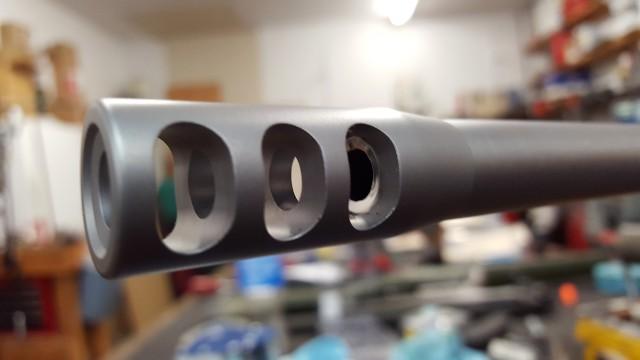brant89
Well-Known Member
So I've been pondering how the process of installing and indexing a brake is done in detail and I'd like to hear more about it. As an engineer, I know how I would do it, but a lot of times machinists have tricks that can make things easier. Here are my questions.
1.) When cutting new threads on a barrel, do you use a caliber specific rod in the bore to indicate the chuck to ensure the threads are concentric to the bore?
2.) Do you have to cut a new crown when you thread a barrel?
3.) When installing a brake that requires indexing (like an APS PK) do you guys prefer to receive a barreled action or the two parts separate and then you set headspace and index the brake?
4.) When indexing a brake without using shims I'm assuming you just chuck the brake in a lathe and remove the correct amount of material to get the proper indexing. Is this correct?
5.) Do you ream the brake for the correct bore size before or after it is mounted on the barrel?
Sorry if these are "noob" questions. Like I said, I know how I would do it but I'd like to hear from some guys who actually do this.
1.) When cutting new threads on a barrel, do you use a caliber specific rod in the bore to indicate the chuck to ensure the threads are concentric to the bore?
2.) Do you have to cut a new crown when you thread a barrel?
3.) When installing a brake that requires indexing (like an APS PK) do you guys prefer to receive a barreled action or the two parts separate and then you set headspace and index the brake?
4.) When indexing a brake without using shims I'm assuming you just chuck the brake in a lathe and remove the correct amount of material to get the proper indexing. Is this correct?
5.) Do you ream the brake for the correct bore size before or after it is mounted on the barrel?
Sorry if these are "noob" questions. Like I said, I know how I would do it but I'd like to hear from some guys who actually do this.

